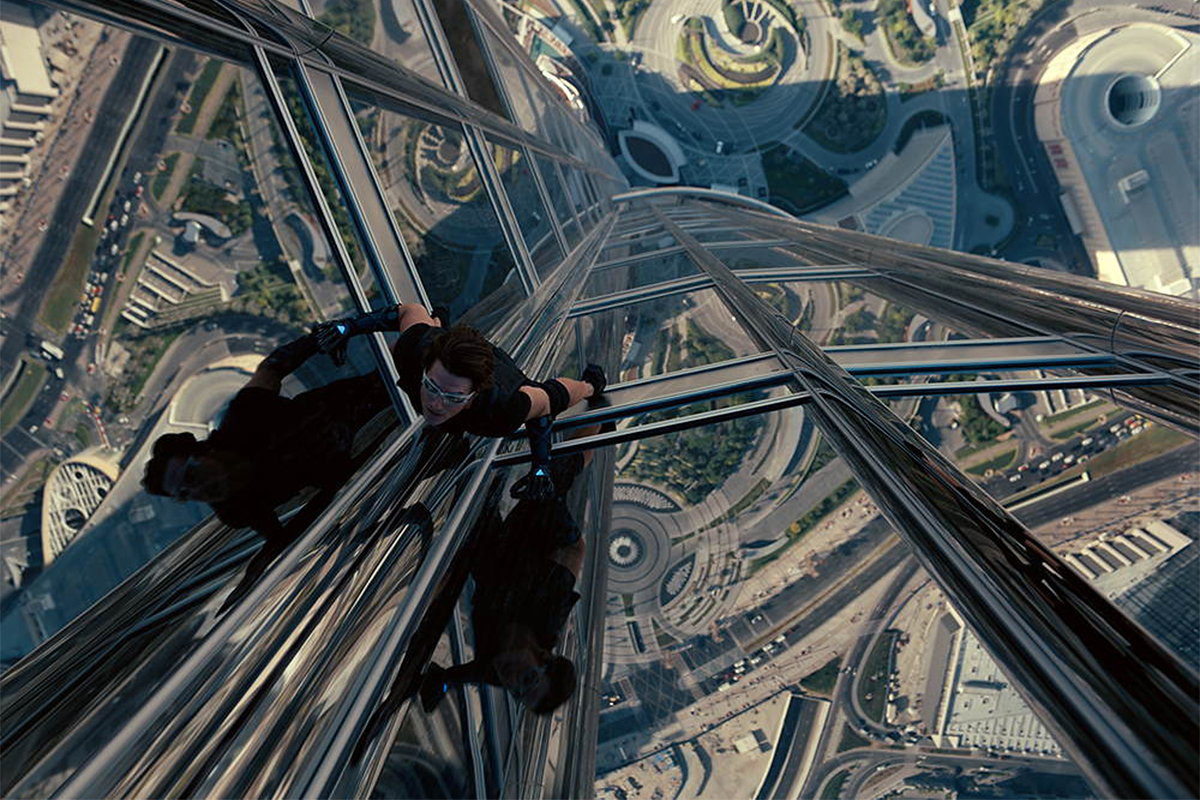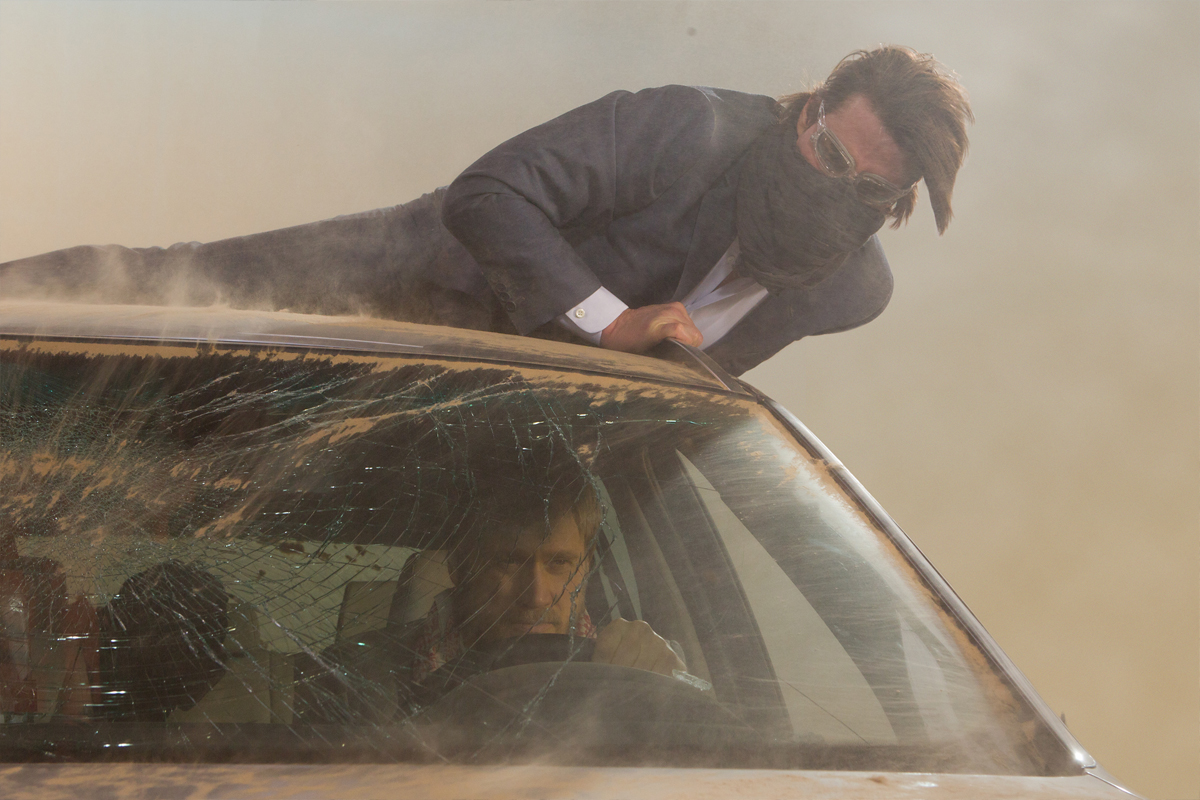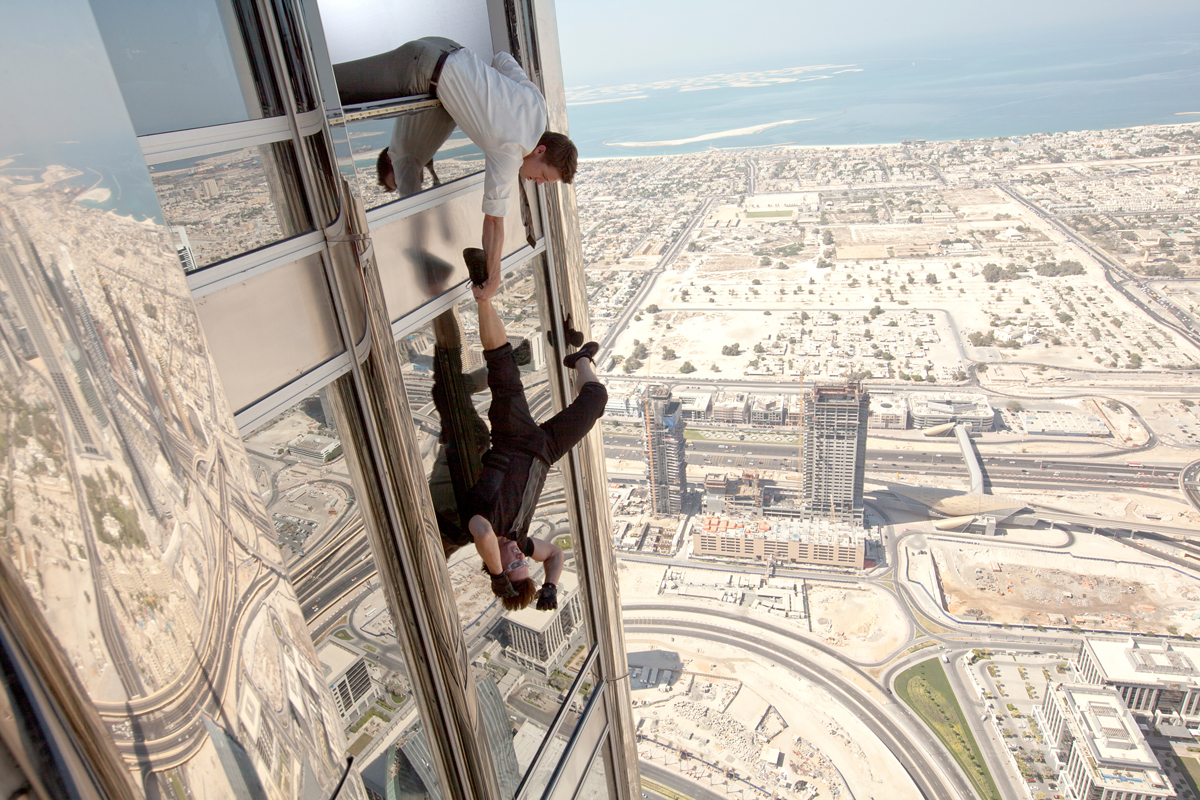John Knoll joined ILM in 1986 as motion control camera operator to work on INNERSPACE and WILLOW. He will then work on THE ABYSS. He’s promoted as VFX Supervisor in 1990 for the film THE HUNT OF THE RED OCTOBER (with Scott Squires). He will oversee the PIRATES OF THE CARIBBEAN and STAR WARS trilogies. He will also participate in MISSION TO MARS, SPEED RACER, AVATAR or recently RANGO.
He is with his brother Thomas, one of the creators of the software Photoshop. He received nine awards including the Oscar for Best Visual Effects for PIRATES OF THE CARIBBEAN: DEAD MAN’S CHEST and more than 20 nominations. In the following interview, he talks about his work on MISSION IMPOSSIBLE: GHOST PROTOCOL that marks his return on this franchise since he had supervised the effects of the first MISSION IMPOSSIBLE.
Can you explain your background before ILM?
I was born and raised in Ann Arbor, Michigan, the son of a Nuclear Engineering Professor at the University of Michigan. As a kid I was fascinated with film and especially films that depicted something that didn’t really exist and included imagery that had to have been manufactured in some way. I earned my Bachelor’s degree at USC in the Cinema program, and while I was a student there, I started working professionally around town as a model maker and motion control assistant cameraman. I worked at mostly small non-union companies like Greg Jein Inc, M3 Effects, Celestial Mechanix, Cinema Research, Introvision and many others. About a year after graduating I saw a job posting at ILM for a motion control camera assistant and I applied.
How was the collaboration with director Brad Bird?
I really like Brad. I’m a big fan of his animated films. I think they’re just brilliant, and I leapt at the opportunity to work with him. He’s got a really good eye for composition and shot design. As you would expect, he’s very finely tuned to see subtleties in animation from his vast experience in at Pixar. Anything we did that was animated, from the spy balloon over the Kremlin, to the IMF Secretary’s SUV splashing down into the Moscow river, to missile flight paths, etc., got Brad’s signature attention to detail.
What was his approach about visual effects for his first live action movie?
Brad was very easy to work with and very collaborative. Since this was his first foray into live action, Bad Robot Productions put together a great crew of very experienced department heads to help him along in areas he was less familiar with. With Visual Effects, Brad was appropriately focused on storytelling clarity, and was happy to leave most of the “make it look real in a live action world” kinds of details to us.
How did you design and create the gadgets used by Ethan Hunt to reach the Kremlin archives?
A 3d model of the hallway was built and textured using photogrammetry techniques, and used to create the synthetic views of the hallway shown on the front and back of the screen. Shots looking through the back of the screen seeing the guard at the far end featured perspective accurate views of what the guard should see from his position in the hallway. These were done by matchmoving the guard’s head in the plate, placing a CG camera at that location, rendering the synthetic hallway from that camera, and then projection texturing that image back onto the screen.
Can you tell us more about the impressive Kremlin explosions?
The Kremlin explosion was a rigid simulation of a CG model of the clock tower and Kremlin wall. The explosions and dust were computer generated using ILM’s GPU accelerated Plume simulation and rendering engine. The cars that are thrown into the air and the rest of red square are all synthetic as well.
What was the real size of the set in which Ethan is trying to flee the explosions?
The set was a 200 by 200 foot flat platform with rubber cobblestones in front of a blue screen. The rest of the environment was synthetic, created both with CG models, matte paintings and still photography of Red Square.
How did you create the car crash seen from the inside?
The Special Effects department built a huge mechanical rig that could roll a real SUV through two full revolutions in about three seconds. Tom Cruise and the other actors were thrown about the interior of the SUV as it was spun on that mechanism in front of a blue screen. Visual effects put in the background, debris, splashes, etc.
How did you prepare the impressive Burj Tower climbing sequence?
The scene of Ethan climbing from the 118th to the 130th floor of the world’s tallest building, the Burj Kalifa hotel in Dubai, was largely filmed on the real building at the full height depicted. Tom Cruise climbed the exterior of the building, and visual effects were used to remove safety cables and their reflections in the building. As dangerous as that was, some work was considered too dangerous or impractical to shoot at full height, and were shot on a partial set down at ground level, with CG building extensions. Ethan’s glove malfunction, kicking a break in the glass of the server room, and his desperate jump for the open window are examples.
Can you tell us more about the huge sand storm that surround Dubai?
The distant and approaching sandstorm shots were created using Plume. Once engulfed in the sandstorm, production attempted to shoot as much of the chase practically as possible, and largely succeeded. visual effects were used to even out dust density, patch areas where visibility was too high, or there were undesirable gaps in the dust. The car chase in particular presented serious safety concerns because of the high probability of an accident with such low visibility. Less practical dust was used in these shots with more extensive CG dust augmentation.
This sequence ends with a impressive car crash. How did you create it?
The car crash was done practically. It was shot separately from Tom Cruise for safety reasons, and we combined the two plates in a composite.
Did you used models for this show like the submarine or the cars?
We didn’t shoot any miniatures at all on this show.
Can you tell us more about the beautiful shot showing the missile going out the submarine and then through the sky?
All of the missile launch and flight shots are computer generated, done at our Singapore studio. The last few shots as the missile approaches San Francisco are built from helicopter plates shot over San Francisco.
Can you tell us more about your work on the final fight? What is real and what is CG?
The chase and fight over a nuclear briefcase is staged in a huge robotic parking garage modeled after the Autostadt in Wolfsburg Germany. A large practical set, two floors high on one side, and five floors high on the other was built in Vancouver for the sequence. The majority of the shots in the garage contain a smaller or larger set extension, with a half dozen or so shots that are entirely computer generated.
How did you create the shot in which Hendricks is falling to his death?
He starts off as a live action element when close to camera. As he starts to fall away, we switch him to a digital double. Most of the set is our CG model in that shot.
You have supervised the VFX for the first Mission Impossible movie. What was your feeling to come back on the serie?
It was fun to revisit the series. A lot has changed since that film about how we work and what tools we use.
How was the collaboration with the VFX supervisors of the different vendors?
Lindy DeQuattro was my Associate Supervisor at ILM on MI4. She supervised the third party work for me.
Was there a shot or a sequence that prevented you from sleep?
The Kremlin explosion shot was very difficult and went through many many changes. It was the first shot we started and the last one we finished.
How long have you worked on this film?
The MI4 schedule overlapped RANGO by four months. I had another ILM VFX Supervisor, Russell Earl, supervise plate photography for the first four months until I was wrapped on RANGO. That meant I didn’t really start full time on MI4 until January. We finished the show in late November.
How many shots have you done?
We did about 700 shots on the film.
What is your next project?
I’m working on PACIFIC RIM for Guillermo Del Toro for a summer 2013 release.
What are the four movies that gave you the passion for cinema?
It’s hard to choose only four, but I’d have to say they are:
FORBIDDEN PLANET, 2001: A SPACE ODYSSEY, SILENT RUNNING and STAR WARS.
A big thanks for your time.
// WANT TO KNOW MORE?
– ILM: Official website of ILM.
© Vincent Frei – The Art of VFX – 2012








